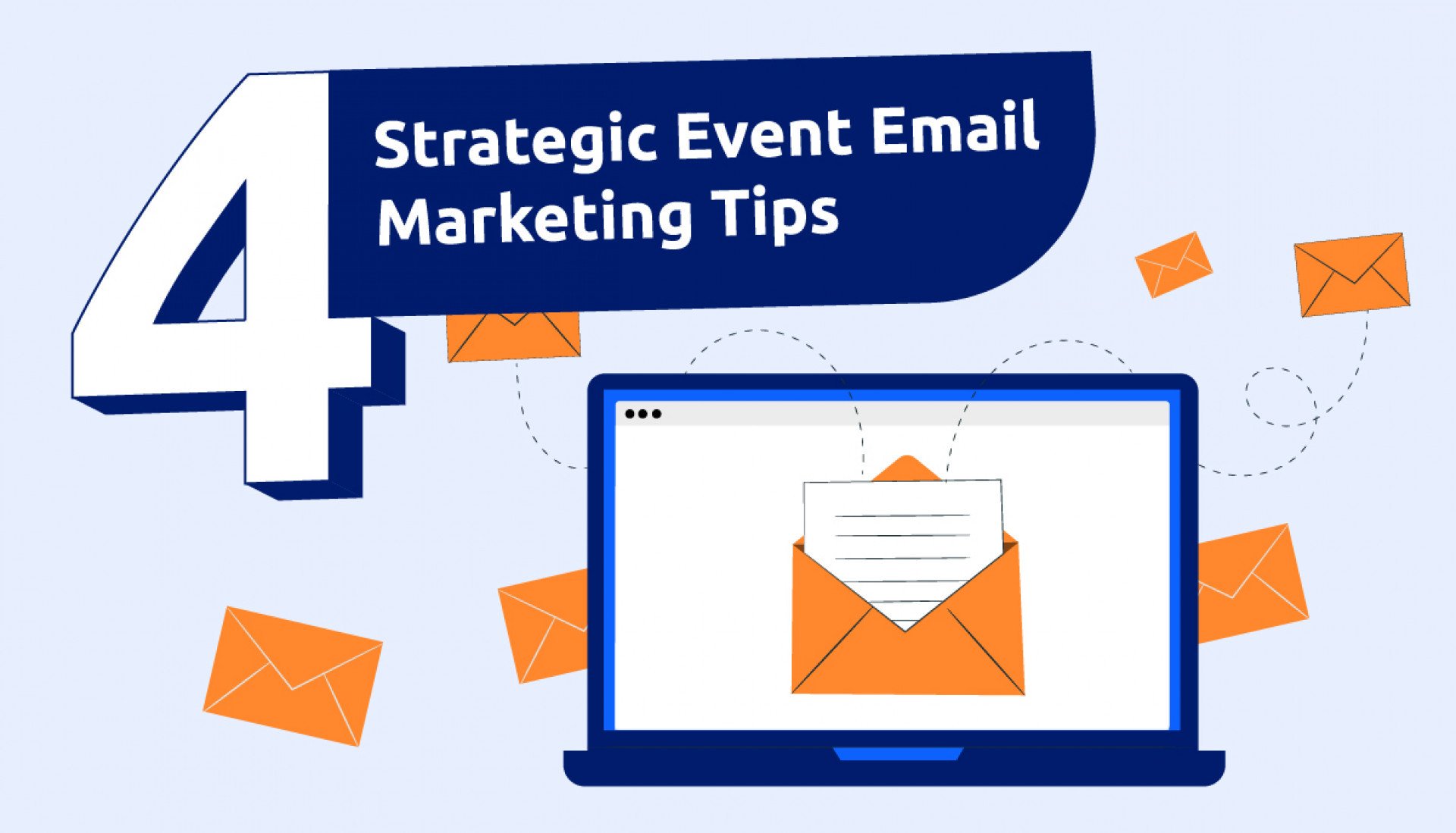
As with all marketing efforts, event marketing doesn't revolve around planning the perfect event and leaving it at that. Your guests may be authorities in their niche, and your venue may be at the spot that's just right, but without promotion, none of that matters.
However, you need to know all the suitable methods to nail that promotion and have a great ROI to benefit you and your brand. And this is where strategic event email marketing can help your efforts.

Creating an email campaign with strong event branding and using tools and techniques such as email personalization and automated sequences is one of the best ways to streamline the process and have more subscribers attend your event, whether it's in-person or online.
First Things First: Why Email Marketing?
Marketers are adamant when it comes to using digital marketing to boost their efforts, and strategic event management is not an exception.
However, email marketing - specifically - gives brands the ability to sell without selling since it's a medium with huge reach:
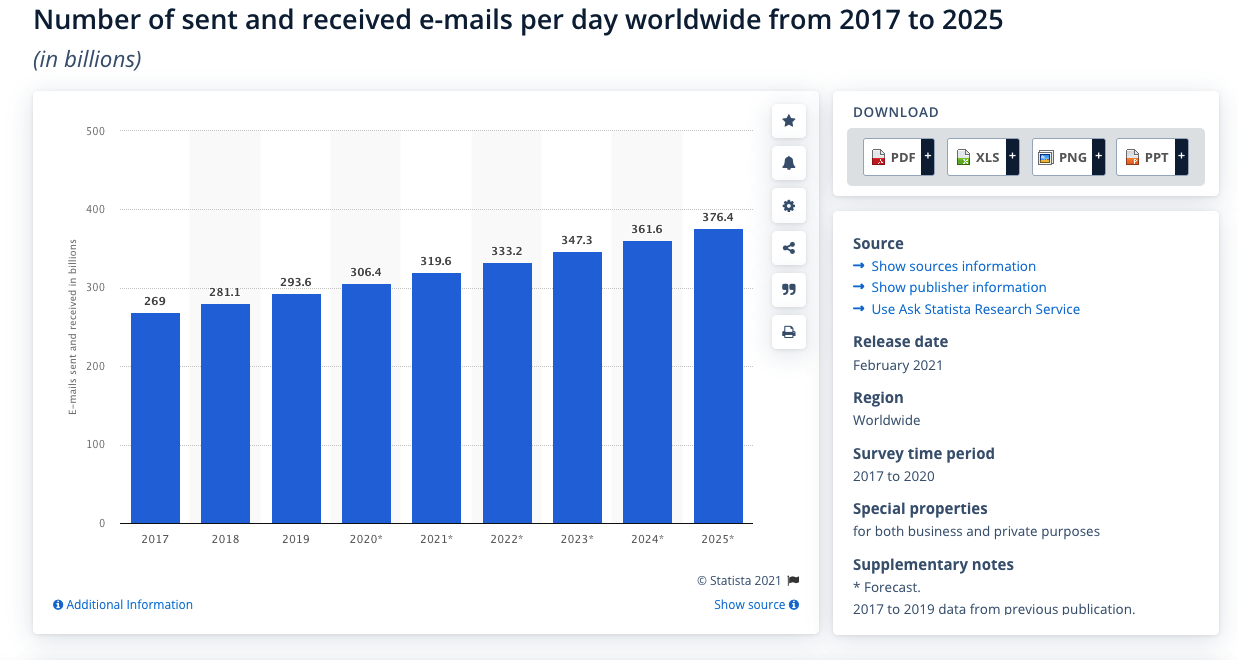
The statistic above proves it. 319.6 billion emails in one year can be translated into just as many channels that open up a dialogue with your audience - unlike social media, where a post could be buried under hundreds of others due to the algorithm.
Using list building techniques to gather people who are actively interested in your content and creating email newsletter campaigns to make sure they receive it and not just bump into it somewhere in cyberspace translates to more sales and increases your conversion.
Email marketing campaigns - especially personalized ones - are like a knock on the prospect's - in our case, attendee's - door: Brands can contact the attendee directly and tell them exactly why their event will be beneficial to them, not beneficial in general.
However, some event marketers fail to understand that and use the power of personalization to their advantage, making it look like email marketing for strategic event planning just doesn't work.
Let's go ahead and see how to make it work the right way.
The Event Launch Campaign
An event launch campaign is something your event planning needs to inform your audience of your launch party event, whether it's online or offline. Event launch campaigns - much like product launch campaigns - are sometimes broken up into many pieces in order to pique curiosity and generate more interest in the event.
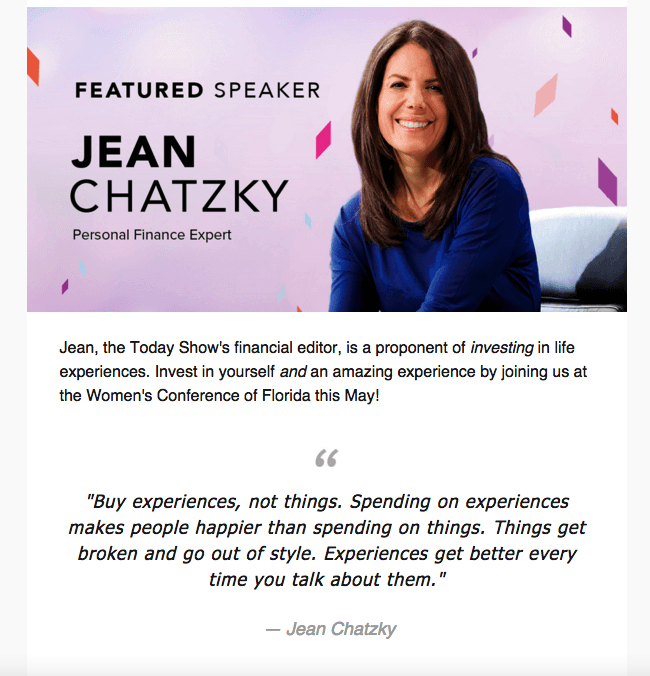
As you see, the above example gives a small taste of what the event will be about before encouraging the users to click on the CTA.
But it's not just that:
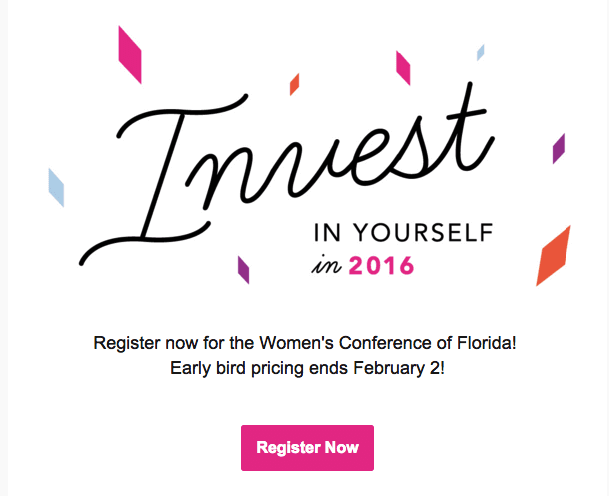
The email talks about something exclusive - in our case, an early bird discount, creating a little bit of FOMO, and motivating people to register as early as possible. This takes advantage of one core element of human behavior: Impulsiveness. Which is amplified when FOMO hits, and a purchase could cost more down the line.
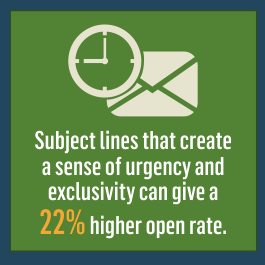
Couple the offer with personalized email templates that use something near and dear to the prospect - in our example, the email speaks to women exclusively - and your event launch email will definitely hit the right mark.
Also, apart from FOMO, you can cleverly use incentives and have better audience reach, and more people receive your email and, potentially, RSVP to your event.
After all, clever event planning doesn't fail to take word of mouth into account. An email sequence that will be well-researched and personalized enough to speak to the right audience and encourage referrals and social sharing on various channels - with something in exchange, no less - will give you more interested leads.
Not to mention how much audiences love it when they become ambassadors for their favorite brands, products, or, in our case, events. And how relevant their social circle is to your niche.
Create Segments, Personalize, and Automate
This might be a little trickier, but segmenting your audience is a fantastic way to ensure your personalization efforts are down to a tee and that your event strategy includes just the right emails to go forward.
Email marketing doesn't work without proper segmentation, and segmentation brings powerful personalization options that will make it seem like you're talking to your audience on a one-on-one basis.
So, to create segments, the first thing to do would be to study your buyer personas. According to Entrepreneur, buyer personas are “Fictional representations of customers can help you get a deeper understanding of who's purchasing your products”.
Based on that, you will start picking the right content hacks that "go better" with each email newsletter campaign and resonate with each of your personas, to the point where the recipients won't help but press "Going" to their email invitation.
You see, a well-segmented email newsletter campaign will ensure that each segment of your audience will receive something that interests them. The difference in personalization could be just a name or an image. The point is that you need to create content that will resonate and make the user feel like they're talking to a friend or a confidant.
But there's also another reason you need to segment your email marketing campaigns and create slightly different content for each segment. According to Forbes, "people have an attention span of eight seconds, a decrease from 12 seconds back in 2000". This means that to capture their attention, you will need to create content that will resonate with them in the first eight seconds after users spot your email in their inbox.
Use their name or some tidbit of what they last saw on your website. Utilize the content of that page and make sure to let them know about relevant events.
Also, ensure that your audience doesn't feel like they're talking to a faceless organization. Your emails will need to "put a face to the name". So, change the "from" address to something more than a plain "info@yourbrandsname.com".
(((IMAGEEE)
That way, you'll make the recipient feel that there's a person reaching out to them and that they're dedicated enough to make them feel comfortable with targeted messages and someone who's there to answer their questions. Your audience is bound to show the same amount of dedication after that.
But apart from personalized content and emails that talk to your audience on a one-on-one basis, there's something else that helps with segmentation: Automated email sequences.
Email automation is, essentially, the act of using specific tools to trigger specific email messages. So, you create an automation, and you set a trigger action. Once the user performs the trigger action, the automated email campaign is set in motion.
While this may seem more useful in the context of eCommerce email, strategic event management can see great benefit through automation because of the following reasons:
- The emails are timely and relevant
- They are a direct continuation of the user's action, which feels natural and non-intrusive
- They have valuable information about something the user finds attractive - otherwise, they wouldn't have performed the trigger action
- It streamlines the marketer's actions, saving time, energy, and resources for your team
So, when a user clicks on a specific event or watches a testimonial video from a past event, don't forget to send them an automated email campaign that will be relevant and will invite them to one of the events you're going to host in the future, provided the content of the pages is relevant, and the email is sent in a timely manner.
Sequences That Make Sense
A launch email is not something that will work every time. As we mentioned already, the amount of emails sent daily is massive, and it's not impossible for your email campaign to fall through the cracks, even if it's a highly personalized email campaign with relevant subject lines.
So, never forget to create follow-up sequences that make sense to the recipient and can give you better results down the line. Here's why:
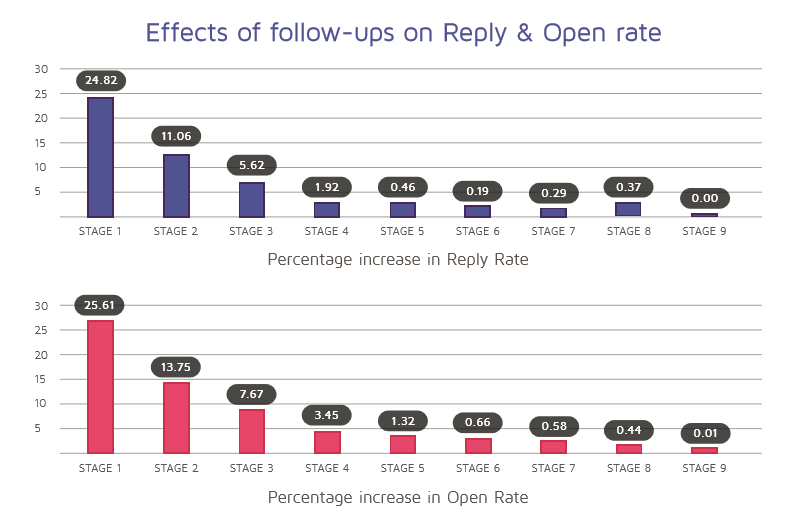
Follow-up emails increase the open and response rates, meaning that your event strategy needs them to boost the RSVP rate and reach the goals your brand has set in your marketing plan.
You can use follow-up email templates that look a little like the launch email but with a bit of a twist.
Don't give up all of the information from the start. That way, you'll generate more curiosity and interest and have people expect your emails. However, make sure to create content that is understandable and conveys all the information a prospect needs. Not too many recipients will turn back to look at previous emails to understand your campaign's point, so you don't want to create unnecessary friction.
You could create emails that will feature tidbits and information of what your event will look like, what keepsakes you're planning on giving out, or perhaps you could generate an extra discount or code for attendees.
Another follow-up email you could create could be dedicated to the event's details. You could include the speakers' bios, create reminders of the time and date, or perhaps you could explain the registration process or why you picked out a specific venue. And if you're going for this type of content, creating an FAQ section on your event planning email would make perfect sense.
That way, you'll distribute content that will be predicting their reactions. And this will boost your authority and make your event seem helpful and relevant. This will increase your authority as well, seeing as your event will be created by someone who cares about going the extra mile and giving valuable interaction to their audience.
If you're not sure about the types of content your audience would like to see in their inbox - and I know that follow-ups can be especially tricky in that sense - you can study your buyer personas. Go the extra mile by creating a survey and sharing it through your digital platforms to gain more insight into what your audience would love to know about your event before RSVPing.
Keep one thing in mind: To gather more attendees, you will need more RSVPs, which will mean perfect email marketing campaigns and event planning. Don't shy away from using FOMO, like "Registered Yet?" or "Few seats left", and don't forget to send reminders to non-openers, as well as those who haven't taken action.
A Couple of General Tips
Nailing a strategic event management email marketing campaign can be pretty tricky, especially if marketers don't have the right tools and strategies in place. So, before going into more depth, using heatmaps, and implementing AI and machine learning for perfect segmentation, there are a couple of things to remember.
First of all, your CTA buttons should be created to pop and contain actionable verbs in their copy. That way, your recipients will be led further down the funnel gently, and they'll know exactly what your email is asking of them.
Secondly, not everyone will have a great response to your content. This is why you need to use A/B testing. A/B testing is the process of changing one key component in your email and using data to determine how they respond and what your next step should be. In email marketing, it could help you create the perfect subject line or email copy.
Lastly, make sure to optimize for mobile:
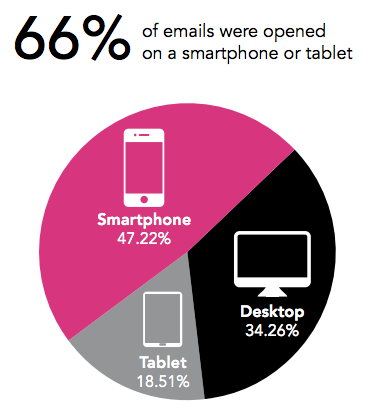
Since most email opens are on mobile devices nowadays and desktop is losing ground, optimizing for mobile seems like the safest choice. Think like a customer here: Suppose you receive an email that looks broken. In that case, would you remember to open it on desktop and read its content? The most likely scenario is that you wouldn't.
The Takeaway
Strategic event management can see great benefits from using email marketing.
Investing in the right tools and an intuitive platform with personalized email templates and automation features can boost the number of people reserving their spot for your event, whether it's in-person or digital.
And knowing just how to segment, personalize, and read data to make educated decisions every step of the way can help your event marketing reach every goal you've set.
Author Bio
Téa Liarokapi is a Senior Content Writer for Moosend, an email marketing and marketing automation platform, and an obsessive writer in general. In her free time, she tries to find new ways to stuff more books in her bookcase and content ideas - and cats - to play with.

![Advantages Of Paperless Board Meetings [+ Tips] Advantages Of Paperless Board Meetings [+ Tips]](/sites/default/files/styles/all_blogs_block_img_384x192/public/ximage_1578.png,qitok=qnhEtzqs.pagespeed.ic.PT9zMW5PrP.jpg)

![PayPal for Nonprofits: A Guide to Accepting Donations and Managing Your Money [with alternatives] PayPal for Nonprofits: A Guide to Accepting Donations and Managing Your Money [with alternatives]](/sites/default/files/styles/all_blogs_block_img_384x192/public/ximage_1807.png,qitok=a0mp9Okd.pagespeed.ic.yrWbcm_t8L.jpg)